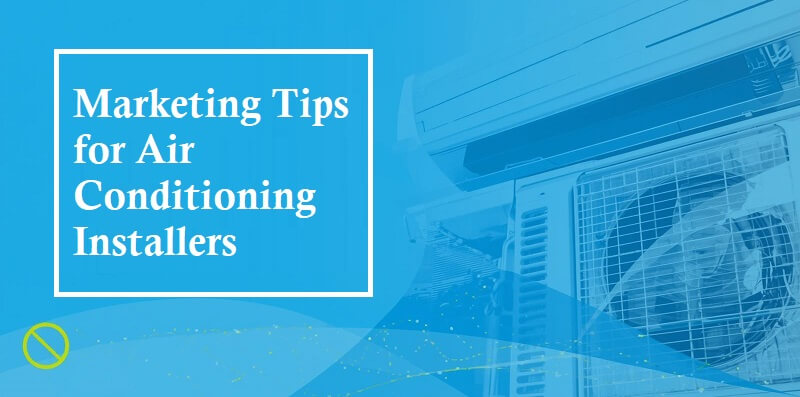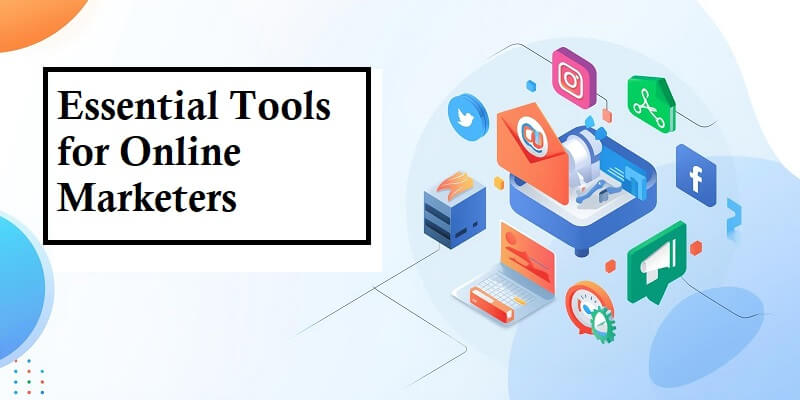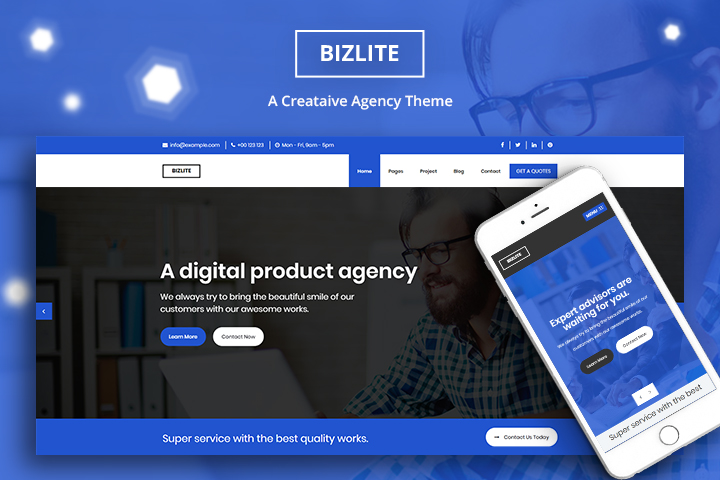
From Tools to Tweets: Marketing Tips for Air Conditioning Installers
in Digital Marketing on October 29, 2025Marketing Tips for Air Conditioning Installers are becoming essential as HVAC marketing stands out as one of the most profitable online business opportunities for 2025. Your air conditioning installation business might be missing major growth opportunities by relying only on word-of-mouth referrals.
Recent data shows that 77% of marketers now use marketing software to get more leads — a clear sign of how AI is revolutionizing digital interaction in modern marketing. The U.S. has over 250 million social media accounts, making digital platforms crucial for reaching potential customers. Marketing automation software proves its worth by producing four times more quality leads than traditional methods.
This piece will help you master the most effective HVAC marketing strategies. You’ll learn everything from digital marketing basics to specific HVAC marketing ideas that get results. These practical tips will make your air conditioning business shine in today’s competitive marketplace, whether you want to boost your online presence or try new HVAC marketing tools.
Build a Clear HVAC Marketing Strategy
Success in the HVAC installation business relies on technical expertise and a well-laid-out marketing plan that connects with the right people. You need a solid framework that guides your marketing efforts before jumping into specific tactics.
Define your target audience
A successful HVAC marketing strategy starts by knowing exactly who needs your services. Instead of trying to reach everyone, focus on specific customer segments that match what your business does best.
Most HVAC businesses (like Klimaszerelo Budapest) serve three distinct customer types:
- Residential homeowners (families, seniors, new homebuyers)
- Commercial property managers and business owners
- Industrial facility operators
Each group has different needs and ways they make decisions. To name just one example, homeowners care more about comfort and energy savings, while commercial clients focus on reliability and maintenance costs.
Your ideal customers become clear when you look at both demographic and geographic factors. Look at income levels, age groups, and property types in your service area. Local weather patterns affect buying decisions – customers in humid regions have different needs than those in dry climates.
As one marketing expert notes, “The best way to get to know and understand your audience is to talk to them.” Make time to chat with current customers about their HVAC concerns and what matters most to them.
Choose the right marketing channels
After identifying your target audience, pick marketing channels that will reach them best. Recent industry data shows online advertising (including Google Ads and social media ads) leads with 85% usage among contractors. Social media marketing follows at 81%, email campaigns at 74%, and direct mail at 70%.
Digital channels usually give faster results at lower costs, but traditional methods still work well for certain groups. A Texas contractor shared, “We run promotions through social media and direct mail to reach new customers and reach our existing database through email marketing campaigns”.
When picking channels, think about:
- Where your specific audience spends time
- Your available resources (time, skills, budget)
- The typical customer’s path to HVAC services
- Seasonal factors that affect channel success
Start with one or two channels that give the best return on investment for your business model. You can expand your marketing mix as your company grows.
Set seasonal goals and budget
The HVAC industry sees big seasonal swings, and research shows that seasonal marketing can drive up to 40% of annual sales. So your marketing plan should match these natural peaks and valleys.
Look at your business data from previous years first. Find your three strongest and three weakest months, then create your marketing calendar. Plan aggressive promotions 21 days before expected weather changes to catch early decision-makers.
Industry experts suggest small-to-midsize HVAC companies should set aside 7-10% of annual revenue for marketing. This percentage changes based on your growth goals:
- Aggressive growth: 10%+ of revenue
- Moderate growth: 4-6% of revenue
- Conservative/maintenance: 2-4% of revenue
Your budget should change with the seasons, putting more resources toward peak demand times. Boost your AC installation advertising in late spring before summer heat arrives, then switch to heating maintenance as fall approaches.
The HVAC marketing strategy works best with the S.M.A.R.T framework—goals that are Specific, Measurable, Attainable, Realistic, and Timely. This approach helps you invest your marketing dollars strategically for maximum return.
Create a Website That Converts Visitors
Your website is the digital storefront of your HVAC installation business. Many contractors don’t see its full potential to generate leads. Most HVAC websites convert only 5-10% of visitors. Top-performing sites achieve 15-30% conversion rates. The right design elements could triple your leads from your existing traffic.
Use clear calls to action
A call-to-action (CTA) helps users take the next step. HVAC businesses need CTAs that guide potential customers to book services or make contact.
Action-oriented language motivates visitors more effectively. Generic phrases like “Contact Us” don’t work as well as:
- “Get Your Free HVAC Estimate Today”
- “Schedule Your AC Service Now”
- “Join Our Maintenance Plan for Exclusive Savings”
The placement of CTAs makes a big difference. Your main CTAs should be “above the fold” where visitors see them without scrolling. Put your phone number in the right corner – many HVAC businesses hide this vital contact detail. Make your CTAs pop with contrasting colors and white space around them.
Time limits on special offers drive more conversions. Messages like “Technicians typically booked 2-3 days out” encourage quick decisions instead of endless shopping around.
Highlight your services with visuals
Visual elements shape how visitors see your business. People connect with other people, not faceless companies. Good photos build trust before the first call.
Your website should show:
- Branded service vehicles
- Uniformed technicians at work
- Before-and-after project photos
- Real team members, not stock photos
Visual hierarchy guides visitor attention naturally. Large fonts highlight key information, while color contrast and quality images help visitors understand your services quickly.
Clear headings and visual elements break up text sections well. Website visitors scan content, especially on mobile devices. Bullet points, short paragraphs, and bold text make reading easier.
Segment content for different customer types
Smart HVAC websites know that visitors have different needs. Customer segmentation groups people based on shared behaviors and traits.
Focus on 3-5 main customer segments to keep things manageable. Your content sections might target:
- Emergency repair customers (speed and 24/7 availability)
- System replacement shoppers (financing options and energy savings)
- Maintenance plan subscribers (preventative benefits and cost savings)
Each group needs messages that speak to their concerns. Homeowners, property managers, and industrial facility operators all look for different things in HVAC services.
Dedicated pages for each service type help visitors find what they need quickly. This approach saves them from searching through general content.
Every page on your site should point visitors toward action. CTAs, compelling visuals, and targeted content work together to turn visitors into leads for your HVAC installation business.
Boost Visibility with Local SEO
Your HVAC business growth depends on local search visibility. Research shows 60% of people contact businesses directly from local search results. Becoming skilled at local SEO techniques gives you a competitive edge in your service area right away.
Optimize your Google Business Profile
Google Business Profile (GBP) forms the foundation of your local online presence. This free business listing shows up when customers look for HVAC services nearby and creates your digital first impression.
The setup process begins at Google Business Profile where you create your profile. Google will send you a verification code by mail to confirm you’re legitimate. Your HVAC company appears in Google search results and Google Maps after verification whenever local customers search for your services.
Your GBP works best when you focus on these elements:
- Keywords: Add search terms like “emergency HVAC repair [your city]” in your business description
- Service areas: List all neighborhoods and zip codes you serve so you show up in location-specific searches
- Categories: Pick specific options like “HVAC contractor” or “air conditioning repair service”
- Photos: Add geo-tagged images that show your team at work on projects
- Reviews: Ask happy customers to leave reviews and make sure you respond to all feedback
NAP (Name, Address, Phone number) consistency across online platforms ranks high among optimization factors. Google favors businesses that maintain matching details across the internet when determining local search rankings.
Use location-based keywords
Location-based keywords guide potential customers to your business like digital signposts. These terms combine HVAC services with geographic identifiers that help you appear when customers search in your area.
Your geo-targeting keywords should include these three types:
- City-specific: “HVAC repair services in [City Name]”
- Regional: “Central [State/Region] HVAC installation”
- District: “Reliable heating repair near [Neighborhood]”
Look through your main landing pages (Home, Services, About, Contact) and make sure these local terms fit naturally in your content. Semrush’s site audit tool can scan your website URL to find pages that need these important keywords.
Businesses serving multiple locations should create specific service pages for each area. This strategy defines your service boundaries and lets you share location-specific details with potential customers.
Try geofencing for local ads
Geofencing lets you show advertisements to internet users within specific geographic boundaries. This innovative technology creates a virtual perimeter around areas where your ideal customers spend time.
You start by picking neighborhoods or business districts to target. Then you create a digital boundary (geofence) around that location. Your ads reach users inside this area who match your demographic filters as they browse websites, watch videos, or use mobile apps.
HVAC businesses find this targeting especially powerful. You could target neighborhoods where you’ve done recent installations with ads that say “We Just Fixed An HVAC Unit With Your Neighbor. Get 10% Off To Service Yours”. Another approach targets residential areas with homes over 20 years old, where HVAC systems often need replacement.
Geofencing makes highly specific marketing possible in ways traditional methods can’t match. Your advertising budget works harder because ads only reach potential customers within your service area instead of people who live too far away.
These three local SEO strategies – optimizing your Google Business Profile, using location-based keywords, and trying geofencing – can significantly boost your HVAC installation business visibility among customers actively searching for services in your area.
Use Email Marketing to Stay Top of Mind
Email marketing stands out as an affordable way to stay connected with HVAC customers throughout the year. Your message reaches people who already care about your services directly, which creates new opportunities between service calls.
Segment your email list
The line between spam and valuable messages comes down to relevance. Email segmentation lets you target specific customer needs with the right message. Research shows that properly segmented email campaigns boost open rates and conversions compared to generic email blasts.
You can split your subscribers based on:
- Equipment type and age: Send replacement offers to customers with systems over 10 years old, while newer system owners get maintenance tips
- Service history: Share preventive maintenance plans with customers who just had emergency repairs
- Geographic location: Build separate lists for different cities to send local promotions
- Engagement level: Adjust your strategy based on active and inactive subscribers
“It’s not about collecting more emails. It’s about attracting the right customers—ones who are actively thinking about their HVAC system, or better yet, already need help,” says an HVAC marketing specialist.
Send seasonal service reminders
Seasonal reminders help customers and generate business during key transition periods. The right timing makes these messages work—send them before extreme weather hits when homeowners start thinking about comfort.
Your seasonal campaigns should include:
- AC tune-up reminders in late spring
- Furnace maintenance notices before cold weather arrives
- Time-sensitive discounts that create urgency
Combining reminders with special deals works well: “£19.85 off your seasonal tune-up when you book before June 1”. Customers tend to act faster when they see a clear deadline.
Simple tips about efficiency and warning signs build trust. This educational content shows you’re an expert who wants to help, not just sell services.
Automate follow-ups with tools
HVAC businesses can’t manage email campaigns by hand. Automation tools handle the work while you serve customers. Studies show that automated email workflows boost engagement by delivering relevant messages at the right time.
Automation works best for:
- Welcome emails to new customers with first-time discounts
- Review requests 1-2 days after service completion
- Maintenance reminders based on actual service dates
- Equipment warranty alerts linked to installation records
Mailchimp and similar platforms offer HVAC-specific templates and analytics to track customer engagement. These analytical insights help you improve your strategy over time.
Smart segmentation, well-timed reminders, and automated follow-ups make email marketing a great way to keep customers thinking about your HVAC business year-round—not just during emergencies.
Leverage Social Media to Build Trust
Social media platforms are a great way to get HVAC installers to build customer relationships beyond traditional marketing channels. Your business can establish credibility and encourage connections with potential customers before they need your services through good social media management.
Post before-and-after photos
Visual content makes an immediate impression on social platforms. Before-and-after photos of your HVAC installations show your expertise and let potential customers know what to expect. These comparisons are a simple yet powerful way to showcase your work quality and specific services.
The most effective transformation posts you can share include:
- Time-lapse videos of challenging installations
- Side-by-side comparisons of dirty versus cleaned coils
- Outdated equipment next to modern, energy-efficient replacements
Make sure you get customer permission before sharing images of their property. Homeowners usually appreciate being asked and tend to get more involved with your business as a result.
Share team stories and customer reviews
Your business becomes more relatable when you highlight technicians, celebrate company milestones, and share team stories. Yes, it is easier for customers to invite you into their homes at the time they see the faces behind the service.
Showcasing employee growth stories works really well. To cite an instance, sharing how a team member grew from helper to manager shows how you value and invest in employee development. This approach makes your brand more human and creates a sense of community that customers value.
Customer reviews create powerful social proof. Research shows people are 2.7 times more likely to make a purchase after reading positive reviews. You can post screenshots of 5-star Google reviews on technician photos or create short video testimonials from happy customers.
Run local promotions and giveaways
Promotional contests help build your social media following while generating leads. Many HVAC businesses miss this chance. You can generate many leads interested in your services with a simple giveaway that offers free service to followers who share their contact information.
Photo contests work well especially when you have multiple social media platforms. The “Ugly Furnace Contest,” where people submit pictures of old units to win a replacement, has shown great results. These interactive promotions help you connect with your audience and find customers ready for system upgrades.
Use hashtags to increase reach
Hashtags work like digital signposts that guide potential customers to your content. They help boost visibility and put you in front of audiences actively searching for HVAC services.
You can make use of these hashtag types:
- Industry-specific: #HVAC, #HVAClife, #HVACcontractor
- Service-related: #airconditioning, #heating, #HVACservice
- Local identifiers: #HVACyourcity, #yourcityHVAC
Keep your posts to 2-3 relevant hashtags to avoid looking spammy. Your company name should be used as a hashtag to build brand recognition and help customers find you online easily.
Automate and Track with HVAC Marketing Tools
Modern HVAC businesses thrive on evidence-based decisions. Powerful automation tools save precious time and ended up improving marketing results through better tracking and measurement.
Use lead tracking software
Lead management systems centralize customer information and streamline daily operations. These platforms automatically capture leads from multiple sources—website forms, phone calls, emails—and organize them in one dashboard for easier follow-up.
HVAC-specific CRM software like ServiceTitan offers automation features that handle routine tasks while connecting marketing activities to revenue metrics. A company reported most important membership growth after implementing targeted audience segments based on customer information such as unsold estimates and aging equipment.
These systems excel at lead nurturing, which ranks as the #1 way automation helps HVAC businesses with marketing. Many potential customers slip away because of delayed follow-ups. Automated responses ensure timely involvement with every prospect and prevent missed opportunities.
Monitor call and web conversions
Phone calls remain vital to local HVAC businesses, making call tracking essential to understand marketing effectiveness. Advanced tracking tools like WhatConverts and ConversionAMP give significant insights beyond simple call counting:
- Which marketing sources generate the most calls
- How many calls convert to booked appointments
- Which keywords drive the highest-quality leads
- Technician performance metrics on calls
Your campaigns’ results become impossible to determine without conversion tracking. Tracking both calls and web form submissions creates a complete picture of your marketing performance. A company noted, “If you’re spending money on marketing, you need to know what you’re getting in return”.
Call conversion rate—not merely call volume—drives business success. Monitoring conversions rather than just counting calls helps you find which campaigns generate actual revenue rather than just activity.
Test affiliate marketing platforms
Affiliate marketing offers affordable ways to expand your reach. Through these programs, others promote your services and earn commission when their referrals become customers.
The process works simply: affiliates receive customized links to share on their websites or social media. Someone clicks and makes a purchase, and the affiliate earns a commission—requiring no extra work from you. Many HVAC companies find this approach delivers qualified leads at a lower acquisition cost.
Effective affiliate programs provide live tracking dashboards that show sales data, traffic generated, and commission balances. This transparency helps you and your affiliates optimize performance over time.
Conclusion
Marketing an air conditioning installation business needs a smart strategy that works on multiple fronts. Traditional word-of-mouth referrals are valuable but can’t match what digital marketing delivers in today’s competitive digital world.
Success starts with a clear marketing plan that fits your target audience and seasonal cycles. Your website acts as your digital storefront. Time spent improving it with strong calls-to-action, professional images, and targeted content will boost your conversion rates.
Local SEO is the most crucial element for HVAC businesses that serve specific areas. Customers search locally at the time they need air conditioning services. A well-optimized Google Business Profile, location-based keywords, and geofencing techniques will boost your visibility where it counts.
Email marketing proves surprisingly effective between service calls. Smart customer grouping, seasonal reminders, and automation tools help your business stay relevant without draining your team’s resources.
Social media platforms are a great way to get attention through before-and-after photos. You can show your team’s personality and build trust with customer reviews. These channels work well to run local promotions that bring qualified customers.
Modern HVAC businesses need tracking tools to measure their marketing results. Without proper tracking, you’ll never know which strategies give the best returns.
The digital world might look overwhelming at first. You don’t need to do everything right away. Start with strategies that match your current business goals. Expand your approach as you build confidence and see results. Note that steady effort matters more than perfection – your online presence needs regular attention rather than occasional bursts of activity.
These practical marketing strategies can help your air conditioning installation business stand out, attract better customers, and build lasting relationships that accelerate growth for years ahead.
FAQs
1. What is the most effective way to market an HVAC business?
The most effective HVAC marketing strategies include optimizing your website for conversions, implementing local SEO techniques, utilizing email marketing, leveraging social media platforms, and using automation tools to track leads and conversions. It’s important to have a clear marketing strategy tailored to your target audience and seasonal business cycles.
2. How can HVAC businesses improve their online visibility?
HVAC businesses can improve their online visibility by optimizing their Google Business Profile, using location-based keywords in their website content, implementing geofencing for local ads, and maintaining consistent business information across all online platforms. Additionally, creating high-quality, relevant content and encouraging customer reviews can boost local search rankings.
3. What role does social media play in HVAC marketing?
Social media plays a crucial role in building trust and relationships with potential customers. HVAC businesses can use platforms to share before-and-after photos of installations, post team stories and customer reviews, run local promotions and giveaways, and use relevant hashtags to increase reach. These strategies help humanize the brand and showcase expertise.
4. How can email marketing benefit an HVAC installation business?
Email marketing allows HVAC businesses to stay top-of-mind with customers between service calls. By segmenting email lists, sending seasonal service reminders, and automating follow-ups, companies can provide valuable information to customers, generate leads, and encourage repeat business. It’s a cost-effective way to maintain customer relationships year-round.
5. Why is tracking and automation important for HVAC marketing?
Tracking and automation are essential for measuring marketing effectiveness and optimizing strategies. Lead tracking software centralizes customer information and streamlines operations, while call and web conversion monitoring helps determine which campaigns generate actual revenue. Automation tools save time, improve lead nurturing, and allow for data-driven decision-making in marketing efforts.







